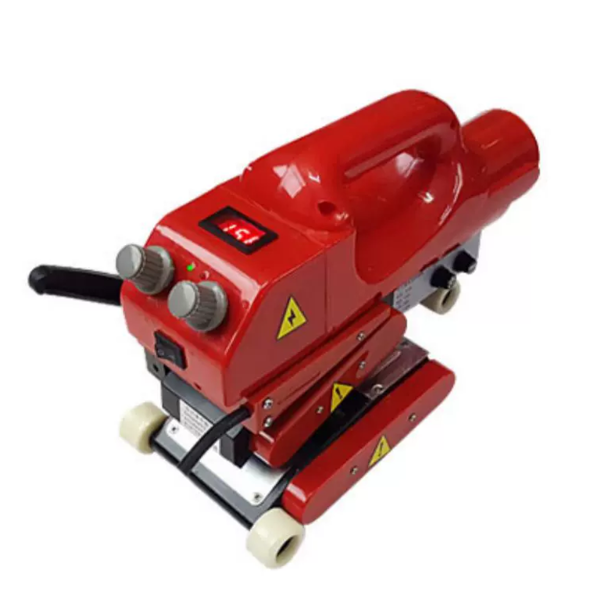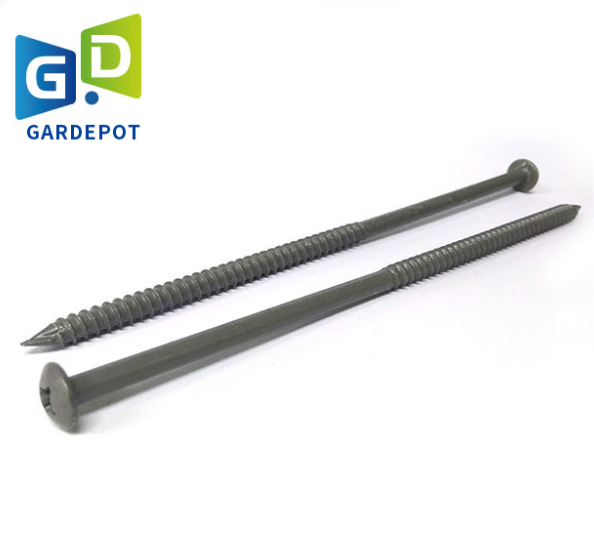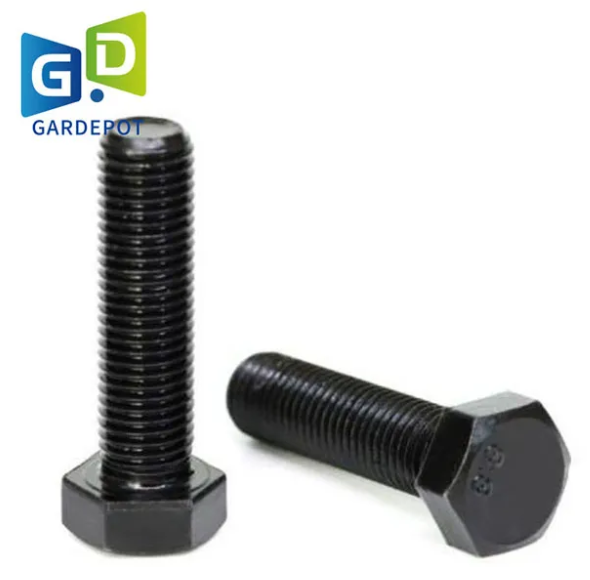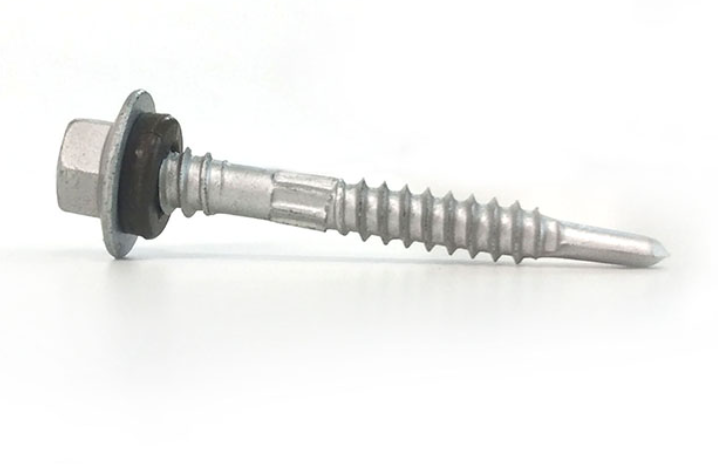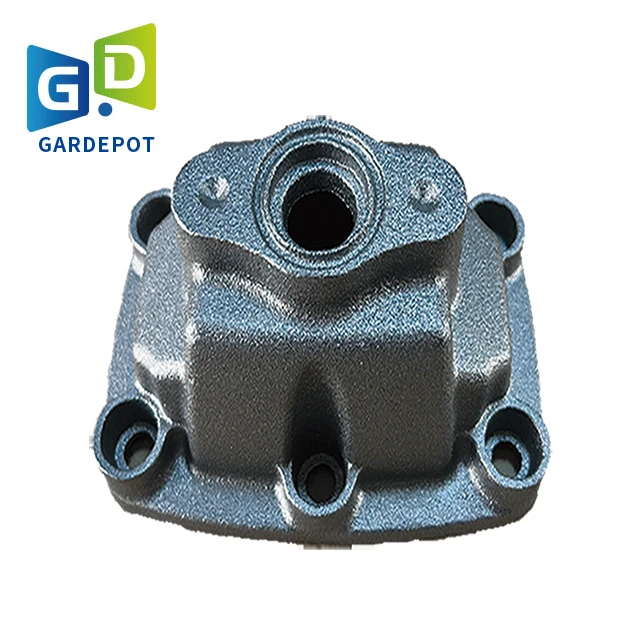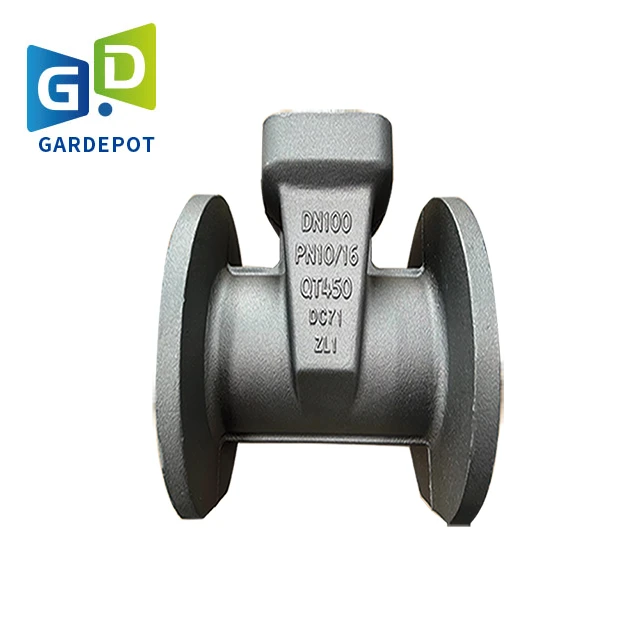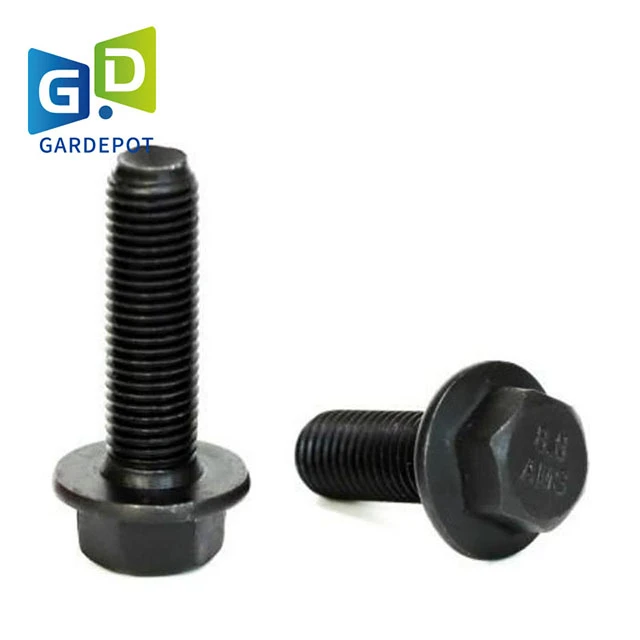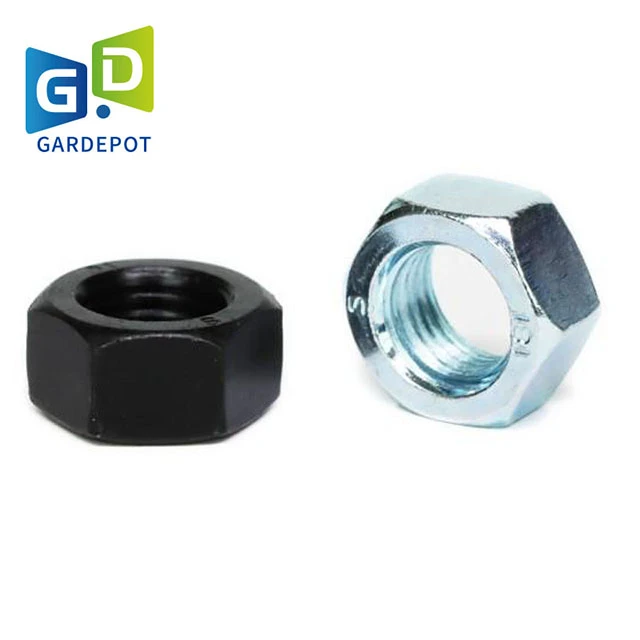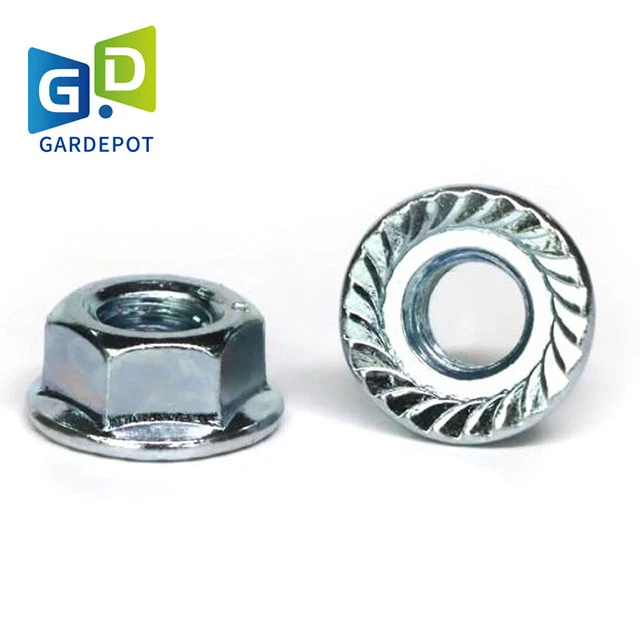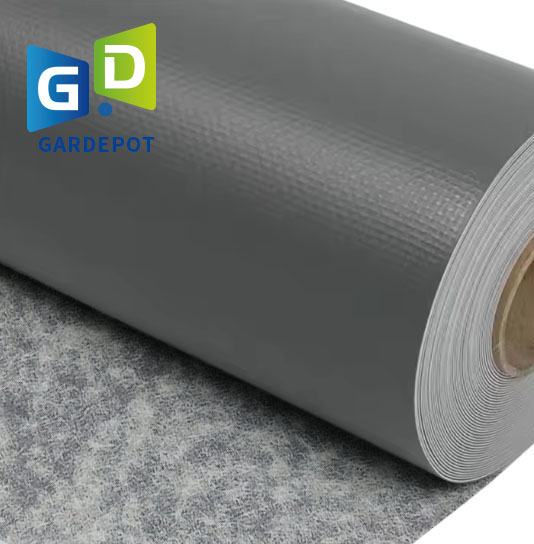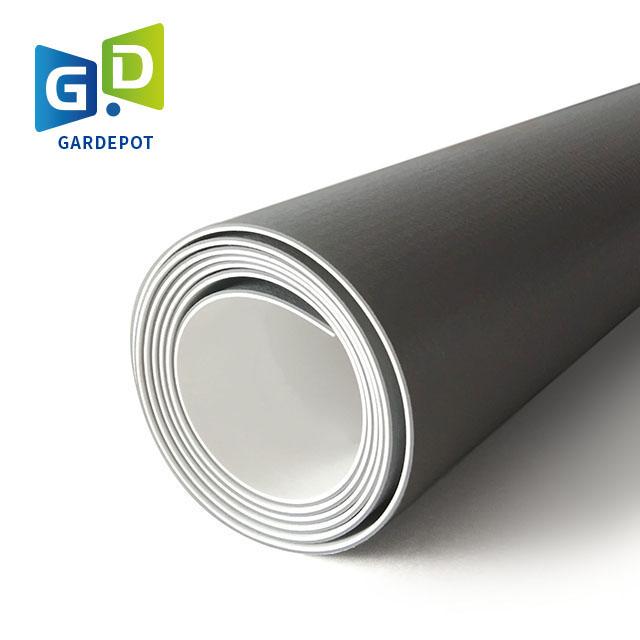TPO Waterproof Membrane | Durable & Reliable Waterproofing Solutions
In the vast landscape of modern construction and infrastructure, effective waterproofing is not merely an optional add-on but a fundamental necessity. It safeguards investments, ensures structural integrity, and enhances the longevity of buildings and critical infrastructure. Among the myriad of waterproofing solutions available, TPO Waterproof Membrane has emerged as a frontrunner, lauded for its exceptional durability, environmental benefits, and superior performance across a diverse range of applications. This comprehensive guide delves deep into the world of TPO, exploring its technical intricacies, manufacturing excellence, diverse applications, and the compelling advantages that make it the preferred choice for architects, engineers, and property owners globally.
Understanding the Imperative of Modern Waterproofing
The construction industry continuously seeks innovative materials that offer enhanced performance, sustainability, and cost-effectiveness. Traditional waterproofing methods often fall short in meeting the stringent demands of modern designs and environmental regulations. This is where advanced thermoplastic polyolefin (TPO) technology steps in, revolutionizing how we approach moisture management in building envelopes and civil engineering projects.
Industry Trends Driving TPO Adoption
The global waterproofing membrane market is experiencing robust growth, primarily fueled by increasing urbanization, stringent building codes, and a growing emphasis on green building practices. Industry reports project the market to reach significant valuations in the coming years, with TPO waterproofing solutions showing a particularly strong upward trajectory. Key trends include:
- Sustainability and Green Building Initiatives: The demand for materials with low environmental impact and high energy efficiency is skyrocketing. TPO's recyclability and reflective properties align perfectly with LEED and other green building certifications. This focus on "cool roofs" significantly impacts energy consumption in large commercial and industrial buildings.
- Longevity and Durability: Asset owners are prioritizing materials that offer extended service life, reducing maintenance costs and the frequency of replacements. TPO Waterproof Membrane's inherent resistance to UV radiation, ozone, and chemical exposure makes it exceptionally durable, often outperforming traditional systems in harsh conditions.
- Prefabrication and Ease of Installation: The construction industry is moving towards more efficient, less labor-intensive installation methods. TPO's lightweight nature and heat-weldable seams facilitate quicker and more reliable installations, leading to reduced labor costs and faster project completion times for TPO waterproofing systems.
- Adaptability to Diverse Climates: From scorching deserts to freezing tundras, modern waterproofing solutions must perform reliably across extreme climatic conditions. TPO Waterproof Membrane retains its flexibility in varying temperatures, ensuring consistent performance without cracking or becoming brittle, a critical feature for global deployment.
These trends underscore the market's shift towards high-performance, sustainable, and reliable solutions, with TPO Waterproof Membrane at the forefront of this evolution. Its robust performance in preventing water ingress makes it an indispensable component of resilient building envelopes.
TPO Waterproof Membrane: Technical Parameters and Specifications
A TPO Waterproof Membrane is a single-ply roofing membrane made from a blend of polypropylene and ethylene-propylene rubber that is polymerized together. It is typically reinforced with a polyester scrim, which significantly enhances its strength, dimensional stability, and puncture resistance. This unique composition grants TPO exceptional physical and chemical properties, making it an ideal choice for challenging waterproofing applications and for meeting stringent TPO waterproofing membrane specifications.
Key Technical Properties:
The performance of a TPO waterproofing membrane is defined by a range of critical technical parameters:
- Tensile Strength: Measured in kN/m (kilonewtons per meter), this refers to the maximum pulling force the membrane can withstand before tearing. High tensile strength ensures the membrane can resist stresses from building movement, wind uplift, or thermal expansion.
- Elongation: Expressed as a percentage, elongation indicates the membrane's capacity to stretch and recover its original shape without losing integrity. This elasticity is crucial for accommodating structural shifts and thermal expansion/contraction of the building substrate, preventing cracks and ruptures.
- Puncture Resistance: This property, typically measured in Newtons (N), quantifies the membrane's ability to resist penetration by sharp objects, whether during installation from tools or after installation from falling debris or foot traffic. Reinforced TPO offers excellent resistance.
- Tear Resistance: Also measured in Newtons (N), tear resistance describes the membrane's ability to resist the propagation of a tear once initiated. A higher value ensures localized damage does not spread, maintaining the waterproofing integrity.
- UV Resistance: TPO Waterproof Membrane inherently resists degradation from prolonged exposure to ultraviolet (UV) radiation from sunlight. This is critical for exposed applications like roofing, where materials can quickly break down if not properly formulated.
- Chemical Resistance: TPO exhibits good resistance to a wide range of chemicals, including many acids, bases, and common industrial pollutants. This makes it suitable for environments where exposure to various chemicals is a concern.
- Heat Reflectivity & Emissivity: These properties relate to a material's ability to reflect solar radiation and re-emit absorbed heat. Light-colored TPO surfaces (especially white) are excellent "cool roofs," significantly reducing heat absorption and lowering indoor cooling costs, directly impacting energy efficiency.
- Dimensional Stability: This refers to the membrane's resistance to shrinking or expanding significantly with temperature fluctuations. High dimensional stability prevents issues like wrinkling, buckling, or pulling away from details, ensuring long-term aesthetic and functional performance.
- Seam Strength: The integrity of a waterproofing system largely depends on the strength of its seams. TPO's hot-air welded seams are unique in that they create a monolithic bond, often stronger than the membrane itself, offering unparalleled resistance to water penetration.
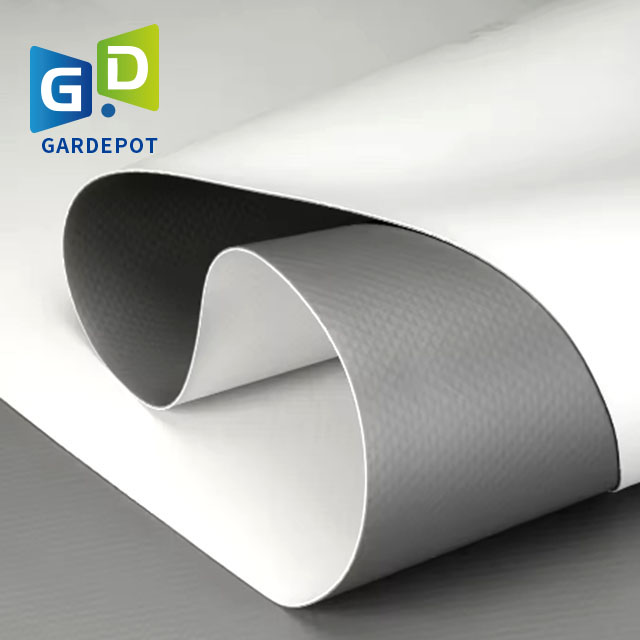
Typical TPO Waterproof Membrane Specifications Table:
The following table presents common specifications for a reinforced TPO Waterproof Membrane. These values are derived from rigorous testing against international standards like ASTM and ISO, ensuring reliable and verifiable performance data. Please note that exact values may vary slightly by manufacturer and specific product line, but these represent typical benchmarks for high-quality TPO waterproofing membrane specifications.
| Property | Standard (ASTM/ISO) | Typical Value (Reinforced TPO) | Unit | Significance |
|---|---|---|---|---|
| Thickness | ASTM D6878 / EN 13956 | 1.0 (40 mil) - 2.0 (80 mil) | mm (mil) | Directly influences durability, puncture resistance, and overall lifespan. Thicker membranes generally offer enhanced protection. |
| Width | N/A | 1.5 - 3.66 | m | Larger widths reduce the number of seams, improving installation efficiency and reducing potential leak points. |
| Weight | N/A | 1.3 - 2.5 | kg/m² | Low weight minimizes structural load on the building, making it suitable for various roof types without extensive structural reinforcement. |
| Tensile Strength (Machine Direction/Cross Direction) | ASTM D6878 | ≥ 80 / ≥ 70 | kN/m | Critical for resisting various forces, including wind uplift and building movement, ensuring the membrane stays intact. |
| Elongation at Break (MD/XD) | ASTM D6878 | ≥ 15% / ≥ 15% | % | Indicates the membrane's flexibility and ability to accommodate thermal cycles and minor structural shifts without failure. |
| Tear Resistance | ASTM D6878 (Trap Tear) | ≥ 150 | N | Measures the force required to propagate a tear once initiated, crucial for maintaining integrity under stress. |
| Puncture Resistance | ASTM D6878 (Static Puncture) | ≥ 250 | N | Resistance to localized damage from sharp objects, protecting the underlying insulation and structure. |
| Solar Reflectivity Index (SRI) - White | ASTM E1980 / CRRC | ≥ 80 | Unitless | High SRI indicates excellent "cool roof" properties, contributing to energy savings and reduced urban heat island effect. |
| Water Vapor Permeance | ASTM E96 | < 0.1 | perm | Low permeance signifies high resistance to water vapor transmission, preventing condensation within the roof assembly. |
| UV Resistance (Accelerated Weathering) | ASTM G155 (5000+ hrs) | No visible cracking, chalking, or crazing | N/A | Ensures long-term performance and appearance under intense solar radiation, crucial for exposed applications. |
| Fire Resistance (External) | UL 790 / ASTM E108 | Class A or B | N/A | Indicates the membrane's ability to resist external fire spread, vital for building safety and code compliance. |
| Root Resistance | FLL Test (Optional) | Passed | N/A | Crucial for green roof applications, preventing plant roots from penetrating the membrane. |
Expert Insight: "The meticulous adherence to ASTM D6878 standards, especially for properties like tensile strength and puncture resistance, is what truly sets a high-performance TPO Waterproof Membrane apart," notes Dr. Eleanor Vance, a leading materials scientist specializing in polymer composites. "The embedded polyester scrim is a game-changer, providing an internal reinforcement structure that dramatically improves dimensional stability and resistance to tearing, ensuring the membrane performs reliably under varying stresses for decades."
The Precision Behind Performance: TPO Waterproof Membrane Manufacturing Process
The superior and consistent performance of TPO Waterproof Membrane is not accidental; it is the direct result of a meticulously engineered manufacturing process that combines advanced polymer science with sophisticated production techniques. Gardepota, a leader in advanced waterproofing solutions with over two decades of dedicated service, employs state-of-the-art methods to ensure every square meter of membrane meets and often exceeds the highest industry standards, reflecting our deep understanding and expertise in TPO waterproofing systems.
Manufacturing Process Explained:
The production of a high-quality TPO Waterproof Membrane follows a precise multi-stage process, integrating material science with advanced engineering:
- Raw Material Preparation & Compounding:
- Polymer Selection: High-grade thermoplastic polyolefin resins (specifically polypropylene and ethylene-propylene rubber) are carefully sourced. Unlike some other materials, TPO does not rely on plasticizers for flexibility, which can migrate over time and lead to brittleness.
- Additive Blending: These virgin polymers are then accurately blended with a proprietary mix of specialized additives. This blend typically includes:
- UV Stabilizers: Critical for resisting long-term degradation from solar radiation, ensuring color retention and membrane integrity in exposed applications.
- Flame Retardants: To enhance fire resistance, allowing the membrane to meet stringent building codes (e.g., UL Class A or B).
- Pigments: Such as titanium dioxide, especially for white membranes, to achieve high solar reflectivity for "cool roof" performance.
- Antioxidants: To prevent oxidation and extend the material's lifespan by resisting heat aging.
- Compounding: The blended raw materials are fed into high-intensity mixers and extruders, where they are heated and subjected to high shear forces. This compounding process ensures a homogeneous melt, with all additives uniformly dispersed throughout the polymer matrix, which is vital for consistent product performance.
- Initial Quality Control: Incoming raw materials and compounded pellets undergo rigorous testing (e.g., melt flow index, density, purity) to verify their chemical composition and physical properties against Gardepota's strict benchmarks, adhering to ISO 9001 quality management principles.
- Extrusion and Calendering:
- Melt Formation: The compounded TPO material is then fed into a large extruder, where it is melted and pushed through a die to form a continuous, uniform sheet.
- Calendering Precision: The molten sheet then passes through a series of highly polished, precisely temperature-controlled rollers (calenders). This critical calendering process presses the material to the exact specified thickness (e.g., 1.0mm, 1.2mm, 1.5mm, 2.0mm), ensuring a smooth surface finish and exceptional dimensional accuracy. This method is superior for producing consistent sheet quality compared to other less controlled processes.
- Reinforcement Integration:
- Polyester Scrim Embedding: At a specific point during the calendering process, a strong, non-woven polyester fabric scrim is continuously fed into the molten TPO. This scrim, often referred to as the reinforcement layer, is precisely positioned and fully encapsulated by the TPO polymer. This embedding process is crucial as it imparts the membrane with its exceptional tensile strength, tear resistance, and dimensional stability, preventing shrinkage or excessive thermal expansion. The bond between the scrim and the TPO must be perfect to ensure long-term integrity.
- Controlled Cooling & Finishing:
- Cooling Rolls: After the scrim is integrated, the hot TPO sheet passes through a series of specialized cooling rollers. This controlled cooling solidifies the membrane, locking in its physical properties and dimensional stability, and preventing warping or distortion.
- Surface Treatment & Quality Checks: The cooled membrane may undergo additional surface treatments for specific applications. Continuous inline quality checks are performed, including optical scanning for thickness uniformity, width verification, and visual inspection for any surface imperfections.
- Edge Trimming & Winding: The finished membrane is precisely trimmed to its final width and then automatically wound onto large, heavy-duty rolls, ready for packaging and shipment. Each roll is carefully inspected and labeled.
- Rigorous Post-Production Testing and Certification:
- Batch Testing: Samples from every production batch are subjected to an extensive battery of laboratory tests in Gardepota’s in-house, accredited testing facility. These tests rigorously verify compliance with international and national standards, including ASTM D6878 (Standard Specification for Thermoplastic Polyolefin (TPO) Based Sheet Roofing), ISO 9001 (Quality Management System), ISO 14001 (Environmental Management System), and ANSI/SPRI standards for wind uplift resistance.
- Performance Validation: Tests include: tensile and tear strength, elongation, puncture resistance, dimensional stability, UV resistance (accelerated weathering for thousands of hours), heat aging, and fire performance (UL 790, ASTM E108). This stringent validation process ensures that every TPO Waterproof Membrane product delivered provides reliable and verifiable performance.
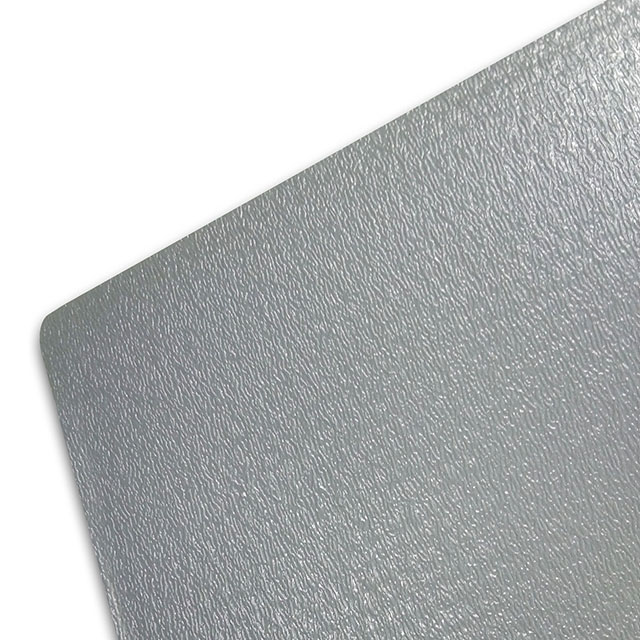
Figure 1: Illustration of a typical TPO manufacturing line highlighting key stages from raw material blending to finished roll. For an interactive experience detailing these precise steps, consider viewing our manufacturing video at Gardepota Product Page.
Product Attributes and Advantages from Manufacturing Process:
- Material Durability: The carefully selected TPO blend, combined with the precise extrusion and reinforcement process, ensures inherent resistance to UV radiation, ozone, and chemical exposure. This results in an exceptional service life typically exceeding 20-30 years, even in harsh climates, making TPO waterproofing a highly durable choice.
- Manufacturing Process (Casting/Extrusion): The advanced calendering/extrusion process produces a smooth, uniform membrane without the use of plasticizers, which are notorious for migrating out over time in other materials, causing brittleness and premature failure. This contributes significantly to TPO's long-term flexibility and stability.
- Testing Standards (ISO, ASTM, ANSI): Gardepota's adherence to global standards like ISO 9001 and ASTM D6878 ensures product consistency, verifiable performance metrics, and a commitment to quality. Our products frequently meet or exceed ANSI/SPRI standards for wind uplift resistance, guaranteeing reliability in high-wind zones and critical applications.
- Usage Lifespan: Through rigorous testing and proven field performance, TPO Waterproof Membrane offers an impressive usage lifespan, often backed by long-term manufacturer warranties (e.g., 20-year to 30-year material and labor warranties), signifying confidence in its prolonged performance.
- Applicable Industries & Advantages:
- Commercial & Industrial Roofing: Ideal for large flat roofs due to ease of heat-welded seams, light weight, and unparalleled energy efficiency ("cool roof" properties leading to significant energy savings, often reducing HVAC loads by 10-25%).
- Civil Engineering (Tunnels, Basements, Underground Structures): Excellent puncture and chemical resistance make it perfectly suited for subterranean applications, protecting against groundwater intrusion, soil contaminants, and aggressive chemicals, thus ensuring long-term structural integrity and preventing corrosion.
- Water Management (Reservoirs, Ponds, Artificial Lakes): Its impermeable nature, coupled with a non-toxic formulation and resistance to biological growth, makes it a safe and effective liner for various water containment projects, preventing leakage and ensuring water quality.
- Green Roof Systems: Its robust root-resistance (often FLL-tested and certified) and superior puncture resistance, combined with extreme durability, make it an excellent and reliable base layer for extensive and intensive vegetated roofs, protecting the building structure below.
- Mining and Waste Management: Due to its chemical resistance and robust physical properties, TPO is increasingly used as a geomembrane liner in challenging environmental applications.
The controlled manufacturing environment and stringent quality checks are fundamental to Gardepota's commitment to delivering a TPO Waterproof Membrane that offers unparalleled performance, exceptional longevity, and ultimate peace of mind for any construction or civil engineering project.
Technical Advantages and Diverse Application Scenarios
The inherent properties of TPO Waterproof Membrane translate into a compelling array of technical advantages, positioning it as a superior choice for a multitude of waterproofing challenges. Its versatility allows for adoption across various sectors, from large-scale commercial complexes to critical infrastructure projects, providing robust and long-lasting TPO waterproofing systems.
Core Technical Advantages of TPO Waterproof Membrane:
- Exceptional Durability and Longevity: TPO Waterproof Membrane is engineered to withstand the harshest environmental conditions. Its advanced formulation provides inherent resistance to UV radiation, ozone, microbial growth, and common chemicals without the use of plasticizers that can leach out. This ensures the membrane does not degrade, crack, or become brittle over time, providing a projected service life that often exceeds 20-30 years with proper installation and minimal maintenance. This significantly reduces the lifecycle cost and environmental impact of the waterproofing system.
- Superior Energy Efficiency (Cool Roof Properties): Light-colored TPO Waterproof Membrane (particularly white, light grey, and tan) boasts high solar reflectivity and thermal emissivity. This means they reflect a significant portion of sunlight away from the building and efficiently re-radiate absorbed heat. This dramatically reduces the heat island effect in urban areas and lowers indoor cooling demands, leading to substantial energy savings for building owners. Many TPO membranes meet or exceed Energy Star and Cool Roof Rating Council (CRRC) standards.
- Environmental Friendliness and Sustainability: As a thermoplastic, TPO is inherently recyclable, both at the end of its service life (where specific recycling programs exist) and during manufacturing (post-industrial scrap). It is free of chlorine, plasticizers, and other halogenated flame retardants, making it a more environmentally responsible choice compared to some alternatives. Furthermore, its low Volatile Organic Compound (VOC) emissions during installation contribute to better indoor air quality and worker safety.
- Robust Seam Strength (Heat-Welded Technology): One of TPO's most significant technical advantages is its ability to be hot-air welded. This process uses specialized equipment to fuse adjacent sheets of TPO into a single, monolithic, and completely watertight layer. These welded seams are often stronger than the membrane itself, offering superior resistance to water penetration compared to adhesive-based or taped seams, a critical factor for long-term waterproofing integrity and resistance to extreme weather events.
- Chemical Resistance: TPO Waterproof Membrane exhibits good resistance to a wide variety of chemicals commonly encountered in industrial, commercial, and civil engineering environments, including many acids, bases, and pollutants. This makes it suitable for applications where exposure to chemical spills or airborne contaminants is a concern, ensuring the longevity of the waterproofing layer.
- Flexibility Across Temperatures: TPO membranes retain their flexibility even in extreme cold temperatures, allowing for reliable performance in diverse climates without cracking or becoming brittle. This low-temperature flexibility also aids in accommodating minor structural movements and thermal cycling of the building without compromising integrity.
- Puncture and Tear Resistance: Reinforced with a robust polyester scrim, TPO membranes offer excellent resistance to punctures and tears. This provides superior protection against foot traffic, falling debris, underlying substrate imperfections, and even root penetration in green roof applications, enhancing the overall resilience of the TPO waterproofing system.
- Ease and Speed of Installation: TPO membranes are lightweight and available in large rolls, which can significantly reduce installation time and labor costs. The hot-air welding process is faster and cleaner than solvent-based or asphaltic applications, leading to quicker project completion and fewer health hazards on site.
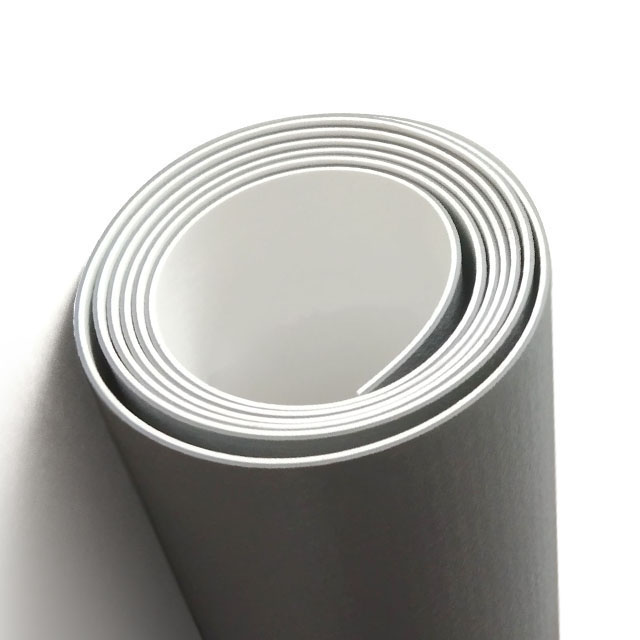
Diverse Application Scenarios:
The versatility and robust performance of TPO Waterproof Membrane allow its application in a broad spectrum of projects, providing reliable TPO waterproofing systems across various industries:
- Commercial and Industrial Roofing: This is the most prevalent application. TPO is ideal for large, low-slope or flat roofs on warehouses, factories, shopping centers, office buildings, and schools. Its lightweight nature, ease of installation, and energy efficiency (via cool roof properties) make it a preferred choice for new constructions and re-roofing projects.
- Green Roofs (Vegetated Roof Systems): Due to its exceptional root-resistance (often certified by FLL standards), excellent puncture resistance, and long lifespan, TPO Waterproof Membrane serves as an ideal primary waterproofing layer beneath extensive or intensive green roof systems, protecting the building structure from moisture and plant root intrusion.
- Ballasted Roof Systems: TPO can be effectively used as the primary waterproofing layer under a layer of ballast (e.g., river rock, pavers, or concrete slabs). The ballast provides additional UV protection, thermal mass, and wind uplift resistance, while the TPO ensures an impermeable barrier.
- Plaza Decks and Terraces: Used as a primary waterproofing barrier for elevated pedestrian areas, multi-story parking structures, and amenity decks. TPO ensures a dry space below and provides a durable, long-lasting base for paving, landscaping, or recreational surfaces, protecting the structural slab from water infiltration.
- Foundation and Basement Waterproofing: Applied to below-grade structures to prevent water ingress from soil and groundwater, protecting basements, foundations, and retaining walls from moisture damage, hydrostatic pressure, and corrosive elements. Its resistance to soil chemicals is a significant advantage in these hidden but critical applications.
- Tunnels and Underground Structures: Essential for preventing water infiltration in complex subterranean environments such as subway tunnels, underpasses, and utility corridors. TPO Waterproof Membrane protects critical infrastructure from corrosion, freeze-thaw cycles, and water damage, ensuring operational safety and longevity.
- Water Retention Systems & Liners: Suitable for lining water features, decorative ponds, retention basins, and even small reservoirs due to its impermeability, non-toxic formulation, and resistance to biological growth. It offers a safe and durable solution for water containment.
- Repurposing and Renovation Projects: In many re-roofing scenarios, TPO can often be installed directly over existing, prepared roofing systems (e.g., modified bitumen, smooth BUR, or single-ply membranes) after proper assessment. This reduces costly and time-consuming tear-off waste and significantly accelerates project timelines.
Case in Point: Achieving Net-Zero Goals on a Data Center
A leading technology firm embarking on a net-zero energy initiative selected a highly reflective white TPO Waterproof Membrane for their new 300,000 sq ft data center in a sunny region. Coupled with advanced insulation, the TPO roof contributed to a 22% reduction in peak cooling loads during summer months, validated by precise energy monitoring systems. This not only significantly lowered operational costs but also played a crucial role in achieving their ambitious sustainability targets, showcasing TPO's tangible economic and environmental benefits.
Choosing the Right Partner: Manufacturer Comparison and Custom Solutions
Selecting the optimal TPO Waterproof Membrane system goes beyond just the product; it involves choosing a manufacturer that embodies quality, innovation, and unwavering support. While general comparisons can be made, Gardepota stands out through its unwavering commitment to specific attributes that define industry leadership in providing reliable TPO waterproofing systems.
Key Criteria for Manufacturer Comparison:
When evaluating suppliers for TPO waterproofing systems, consider the following critical factors that distinguish a superior product and partnership:
- Product Quality and Consistency:
- Material Purity and Formulation: Does the manufacturer primarily use virgin polymers and a carefully balanced blend of high-performance additives? The absence of excessive fillers or reliance on low-grade recycled content can significantly impact long-term performance, flexibility, and weldability.
- Manufacturing Process Technology: Look for manufacturers employing advanced extrusion and calendering techniques, coupled with robotic precision, to ensure uniform thickness, consistent scrim encapsulation, and defect-free surfaces. This consistency is paramount for reliable installation and performance.
- Testing and Certification Regime: Are products rigorously tested to international standards (e.g., ASTM D6878, ISO 9001, ISO 14001, FM Approvals, UL) by independent third-party laboratories? Certifications like ISO 9001 (Quality Management System) and ISO 14001 (Environmental Management System) demonstrate a commitment to both product excellence and responsible manufacturing.
- Innovation and Research & Development (R&D):
- Does the manufacturer invest heavily in R&D? This ensures they are at the forefront of developing new formulations, enhanced durability, improved energy efficiency (e.g., higher SRI values), and specialized products for unique challenges (e.g., extreme chemical resistance, enhanced root barrier properties).
- Are they developing complementary system components (adhesives, fasteners, flashing materials) that are specifically engineered to work seamlessly with their TPO Waterproof Membrane for optimal system performance?
- Warranty and Technical Support:
- What type of warranty is offered (material-only, labor & material, extended)? A comprehensive, long-term warranty (e.g., 20+ years for TPO waterproofing membrane specifications) reflects the manufacturer's confidence in their product and willingness to stand behind it.
- Is robust, responsive technical support available? This includes detailed installation guides, comprehensive CAD details, specification writing assistance, on-site project reviews, and training programs for installers and contractors to ensure proper application and compliance.
- Environmental Stewardship and Sustainability Initiatives:
- Does the manufacturer have a clear, verifiable commitment to sustainability? This includes responsible sourcing of raw materials, energy-efficient manufacturing processes, reduction of waste, and involvement in product recyclability programs. Look for environmental product declarations (EPDs) or health product declarations (HPDs).
- Experience, Reputation, and Track Record:
- How many years has the company been actively involved in the waterproofing industry, specifically with TPO? A long track record (Gardepota boasts over two decades of dedicated service and expertise in TPO waterproofing systems) often indicates reliability, deep expertise, and a history of successful project delivery.
- Review available case studies, customer testimonials, and independent industry accolades or awards.

Gardepota's Commitment to Custom Solutions:
At Gardepota, we understand that no two projects are identical, and off-the-shelf solutions may not always be sufficient for optimal performance. This philosophy underpins our approach to providing highly customized TPO Waterproof Membrane solutions. Our capabilities extend beyond standard product offerings to encompass bespoke design and manufacturing tailored to specific project requirements:
- Tailored Thicknesses and Widths: While standard thicknesses (1.0mm, 1.2mm, 1.5mm, 2.0mm) are common, we can provide specific gauges and roll widths to optimize material usage, reduce installation time, and minimize the number of seams for unique project dimensions (e.g., exceptionally large roof areas or complex geometries).
- Custom Colors and Finishes: Beyond the standard white, grey, and tan, we can match custom colors for aesthetic integration with specific architectural designs, provided minimum order quantities are met. This is particularly valuable for visible roofing elements, architectural facades, or specialized water features where visual appeal is paramount.
- Specialized Reinforcement Options: For applications demanding extraordinary tensile strength, enhanced puncture resistance, or specific load-bearing capacities, we can integrate enhanced polyester scrims or even develop dual reinforcement layers within the TPO Waterproof Membrane to meet exacting performance criteria.
- Pre-Fabricated TPO Accessories: To expedite installation, improve quality control, and ensure watertight details in complex areas, we offer factory-welded TPO accessories such as pipe boots, inside/outside corners, scuppers, and custom-formed flashing components. These reduce on-site labor, minimize potential leak points, and ensure consistency.
- Comprehensive System Design and Consultation: Our team of expert engineers and technical specialists collaborates directly with architects, consultants, contractors, and owners from the early design stages. We provide in-depth consultations to develop comprehensive TPO waterproofing systems, offering detailed CAD details, specification writing assistance, and value engineering to ensure seamless integration with other building components and optimal long-term performance.
- Performance-Driven Formulations: For extreme environments (e.g., high chemical exposure from industrial exhausts, unusual temperature fluctuations in very hot or cold climates, or specific root barrier requirements), our R&D team can develop specialized TPO formulations with enhanced properties to precisely meet those unique challenges, ensuring peak performance under specific stress factors.
"Our philosophy isn't just about selling a product; it's about providing a comprehensive waterproofing solution," states Mr. Jian Li, Chief Engineer at Gardepota. "We leverage our deep expertise, flexible manufacturing capabilities, and relentless pursuit of innovation to deliver TPO waterproofing systems that are not just durable, but perfectly aligned with the unique demands of each project. This client-centric, problem-solving approach has fostered long-term partnerships and built unwavering trust within the industry over the past two decades."
Through this unwavering commitment to customization, cutting-edge technology, and unparalleled customer support, Gardepota aims to be more than just a supplier – we strive to be a trusted partner in achieving superior, long-lasting waterproofing outcomes for complex and critical projects worldwide.
TPO Waterproof Membrane in Action: Application Cases and Client Success
The true measure of any waterproofing system lies in its proven performance in real-world scenarios. TPO Waterproof Membrane has been successfully deployed in thousands of projects globally, demonstrating its reliability, efficiency, and longevity across diverse applications and challenging environments. Here, we highlight generalized application cases that exemplify the practical benefits and high levels of client satisfaction derived from adopting Gardepota's TPO waterproofing systems.
Case Study 1: Large-Scale Commercial Distribution Center – Energy Savings and Rapid Deployment
Client Profile: A prominent global logistics company requiring a new, extensive distribution hub in a region characterized by intense summer heat and high energy costs.
Challenge: The client required a durable, energy-efficient roofing solution for their massive 1.2 million sq ft distribution center. Speed of installation was paramount to meet tight construction deadlines and commence operations swiftly, while simultaneously achieving significant long-term energy cost reductions.
Solution: Gardepota partnered with the project's architects and contractors to supply a 1.5mm thick, highly reflective white TPO Waterproof Membrane system. The membrane was mechanically fastened to the roof deck, a method chosen for its efficiency and suitability for large-scale projects. The wide rolls (3.66m/12ft) and the advanced hot-air welding technology facilitated extremely rapid installation by a certified TPO waterproofing contractor team, significantly reducing the project's critical path.
Outcome: The roofing phase was completed approximately 25% faster than initial estimates for alternative systems, enabling the facility to become operational ahead of schedule. Post-occupancy energy audits, conducted over a full year, confirmed an impressive 18% reduction in annual HVAC cooling loads, translating to hundreds of thousands of dollars in energy savings for the client annually. The client praised the system's robust performance, the visible reduction in their carbon footprint, and Gardepota's seamless technical support and on-time material delivery, which was critical for project continuity.
Case Study 2: Historic Institutional Building Renovation – Preserving Heritage with Modern Durability
Client Profile: A prestigious university undergoing a comprehensive renovation of a century-old institutional building with a complex, multi-level flat roof structure.
Challenge: Renovating the aged flat roof required a waterproofing solution that offered modern performance, exceptional durability, and flexibility, all while respecting the building's historical integrity and architectural aesthetics. A key concern was the limited load-bearing capacity of the existing historic structure and the need for a flame-free installation method due to the building's age and materials.
Solution: Gardepota recommended and supplied a lightweight, 1.2mm reinforced TPO Waterproof Membrane. Its superior flexibility allowed it to conform to the building's intricate rooflines and existing structural nuances without adding significant load. The inherent flame-free hot-air welding installation method was a crucial safety advantage, eliminating fire risks associated with torch-applied systems on a historic wooden structure. The membrane provided a robust, yet aesthetically unobtrusive, waterproofing layer.
Outcome: The TPO waterproofing system provided a high-performance, long-lasting solution that seamlessly integrated with the building's architectural demands, preserving its historical character. The minimal weight of the TPO membrane was ideal for the structure's load limitations. Furthermore, the quick and clean installation process minimized disruption to ongoing campus activities. The university's facilities management expressed immense satisfaction with the enhanced protection against water ingress, the system's projected long lifespan, and the reduced long-term maintenance needs, ensuring the building's longevity for future generations.
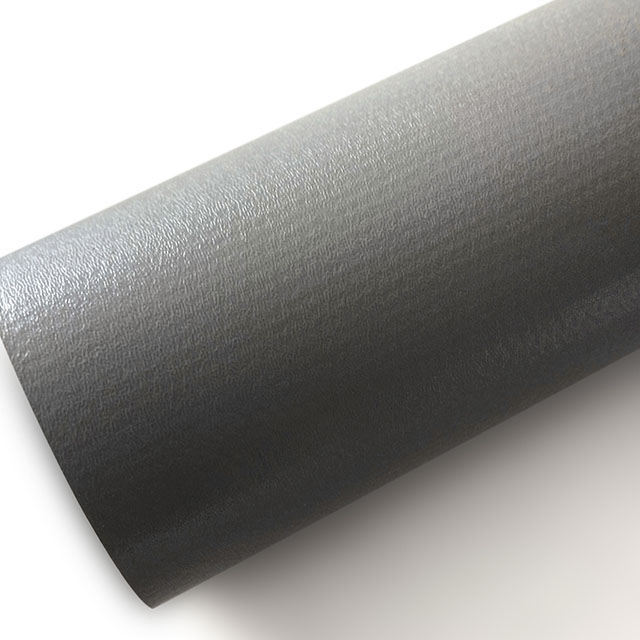
Case Study 3: Subterranean Multi-Level Parking Garage – Resilient Protection in Demanding Conditions
Client Profile: A large urban development project constructing a multi-level underground parking garage beneath a new mixed-use complex with significant overlying landscape features.
Challenge: Waterproofing a complex subterranean parking garage demanded a membrane capable of resisting significant hydrostatic pressure, aggressive chemicals from vehicle fluids (oils, fuels, de-icing salts), and potential root penetration from the overlying intensive landscaping. Long-term performance without accessibility for repairs was critical.
Solution: Gardepota provided a heavier gauge, highly reinforced 2.0mm TPO Waterproof Membrane. Its exceptional puncture resistance provided superior protection against potential damage from rebar, concrete imperfections, and subsequent landscaping activities. The membrane’s robust chemical inertness safeguarded against potential exposure to oil and fuel spills from vehicles. The fully adhered installation method, combined with Gardepota's signature robust, heat-welded seams, ensured a completely impermeable and continuous barrier against water and chemical ingress, even under constant hydrostatic pressure.
Outcome: The TPO waterproofing membrane system proved to be a highly resilient and reliable solution for this demanding underground environment. Inspections conducted five years post-installation, including thermal imaging and moisture detection, confirmed the membrane's complete integrity with no signs of water ingress or degradation, ensuring the long-term structural health and usability of the parking facility. This project profoundly underscored TPO's superior performance, durability, and chemical resistance in critical civil engineering applications, securing the investment for decades to come.
Client Feedback and Gardepota's Service Experience:
Our commitment extends beyond simply manufacturing and delivering a product; we are dedicated to providing comprehensive client support and fostering long-term partnerships. Gardepota’s service experience is built on a foundation of trust, expertise, and reliability:
- Responsive Technical Assistance: Our dedicated team of expert engineers and technical specialists provides prompt and thorough support at every stage of a project, from initial design and specification development to on-site problem-solving and troubleshooting. We are available to answer complex questions regarding TPO waterproofing membrane specifications and installation.
- Comprehensive Training Programs: We offer extensive, hands-on training programs for installers, contractors, and design professionals to ensure proper application techniques, adherence to best practices, and maximization of system performance and longevity. Our goal is to empower our partners with the knowledge to execute flawless installations.
- Robust Post-Installation Support and Warranty: Gardepota offers comprehensive and robust warranties (typically ranging from 20-year to 30-year material and labor warranties, depending on system configuration and project specifics) that reflect our confidence in product durability. We also provide ongoing maintenance guidance to ensure the prolonged, optimal performance of our TPO waterproofing systems.
- Sustainable Practices and End-of-Life Management: We actively participate in and promote recycling initiatives for TPO waste generated during manufacturing and installation processes. Our commitment to environmental responsibility extends throughout the product lifecycle, contributing to a circular economy in construction materials.
These real-world applications and the consistently positive feedback from our diverse global client base underscore the unmatched reliability, value, and peace of mind that TPO Waterproof Membrane brings to complex and critical construction challenges. Our experience spanning over two decades in the waterproofing industry speaks volumes about our unwavering dedication to quality, innovation, and paramount customer satisfaction.
Frequently Asked Questions about TPO Waterproof Membrane
Understanding the nuances and technical details of TPO Waterproof Membrane is crucial for making informed decisions regarding its application and long-term performance. Here are answers to some of the most common and professional questions:
1. What is the primary material composition of a TPO Waterproof Membrane and what makes it unique?
TPO Waterproof Membrane is primarily composed of thermoplastic polyolefin, which is a proprietary blend of polypropylene (PP) and ethylene-propylene rubber (EPR or EPDM). What makes it unique is this precise polymerization of PP and EPR, creating a material that combines the flexibility of rubber with the heat-weldability and weathering resistance of thermoplastics. Crucially, it achieves its flexibility without the use of liquid plasticizers, which are known to leach out over time in other membrane types (like PVC), causing them to become brittle. It is typically reinforced with a woven polyester fabric scrim embedded within for enhanced strength, puncture resistance, and superior dimensional stability.
2. What are the key performance advantages of TPO over other common waterproofing membranes like PVC or EPDM, particularly concerning TPO waterproofing systems?
TPO offers a compelling blend of advantages. Compared to PVC, TPO is chlorine-free and does not contain plasticizers, making it more environmentally benign and less prone to embrittlement over its lifespan. Compared to EPDM, TPO boasts significantly stronger heat-welded seams; the hot-air welding process creates a monolithic bond that is often stronger than the membrane itself, resulting in a more reliable and completely watertight barrier. TPO also generally offers superior solar reflectivity (especially in white formulations) for energy efficiency and higher puncture resistance due to its reinforced nature, making it a highly robust and versatile solution for various TPO waterproofing systems.
3. What is the typical expected service life of a TPO Waterproof Membrane system, and what factors influence its longevity?
With proper design, installation, and maintenance, a high-quality TPO Waterproof Membrane system typically has an expected service life of 20 to 30 years or even longer. Factors influencing its longevity include membrane thickness (thicker membranes generally last longer), climate conditions (extreme UV or temperature cycles can impact lifespan, though TPO is highly resistant), quality of installation (proper seam welding and detailing are critical), and adherence to maintenance schedules. Reputable manufacturers often back their products with extensive warranties, reflecting this long lifespan.
4. How is TPO Waterproof Membrane typically installed, and what are the standard methods used for TPO waterproofing?
TPO Waterproof Membrane is predominantly installed using three main methods: mechanical fastening (where the membrane is physically attached to the roof deck with fasteners), fully adhered systems (where the membrane is bonded to the substrate with adhesive), or ballasted systems (where the membrane is loose-laid and held down by aggregate or pavers). The most critical aspect of installation for all methods is the seam welding: individual sheets are joined together using specialized hot-air welding equipment, creating a homogeneous, watertight bond. Proper surface preparation, detailing around penetrations, and edge securement are also crucial for a successful and long-lasting TPO waterproofing installation.
5. Does TPO Waterproof Membrane contribute to building energy efficiency, and how is this measured?
Absolutely. White and light-colored TPO Waterproof Membrane is highly reflective, meaning it reflects a significant portion of solar energy (heat) away from the building. This "cool roof" effect substantially reduces the heat absorbed by the roof, leading to lower indoor temperatures and decreased reliance on air conditioning. This directly translates into reduced energy consumption and lower utility bills, making it a key component of sustainable building design. Its energy efficiency is typically measured by its Solar Reflectivity Index (SRI) and thermal emissivity, as certified by organizations like the Cool Roof Rating Council (CRRC) and meeting standards such as Energy Star.
6. What industry standards and certifications should I look for when selecting a TPO Waterproof Membrane and evaluating TPO waterproofing membrane specifications?
When selecting a TPO Waterproof Membrane, it's essential to ensure it complies with recognized industry standards and holds relevant certifications to guarantee quality, performance, and safety. Key standards and certifications to look for include: ASTM D6878 (Standard Specification for Thermoplastic Polyolefin Based Sheet Roofing for performance metrics), FM Approvals (for wind uplift resistance and fire performance), UL (Underwriters Laboratories) classifications for external fire resistance, ISO 9001 (Quality Management System for the manufacturer's processes), ISO 14001 (Environmental Management System), and ANSI/SPRI standards for various aspects like wind design. These ensure the product meets stringent TPO waterproofing membrane specifications.
7. Can TPO membranes be recycled? What are their broader environmental benefits and how do they contribute to green building?
Yes, TPO membranes are thermoplastics and are fully recyclable, typically as post-industrial scrap generated during manufacturing. In some regions, initiatives are emerging for post-consumer recycling of TPO roofing membranes at the end of their service life. Their broader environmental benefits include: being free of chlorine and plasticizers (reducing harmful chemical leaching), having low Volatile Organic Compound (VOC) emissions during installation (improving indoor air quality), and significantly contributing to reducing the urban heat island effect through their high solar reflectivity. These attributes position TPO waterproofing membrane as a highly sustainable choice in modern construction, supporting LEED and other green building certification requirements.
Conclusion: The Future is Watertight with TPO
As the demands on modern construction continue to evolve, the need for robust, sustainable, and high-performance waterproofing solutions becomes paramount. The in-depth exploration of TPO Waterproof Membrane unequivocally positions it as a leading contender, offering an unparalleled blend of technical superiority, environmental responsibility, and compelling economic advantages for any project requiring reliable TPO waterproofing systems.
From its meticulously controlled manufacturing process, which ensures consistent quality and verifiable performance against stringent TPO waterproofing membrane specifications, to its impressive array of inherent technical attributes—including exceptional durability, remarkable energy efficiency, superior chemical resistance, and robust hot-air welded seam strength—TPO stands as a testament to advanced material science and engineering excellence. Its remarkable versatility across diverse applications, ranging from expansive commercial roofs and sophisticated green roof installations to critical underground structures and demanding civil engineering projects, further solidifies its status as a universal and indispensable waterproofing solution in today's construction landscape.
Choosing a reliable manufacturer like Gardepota, with a proven track record of over two decades of innovation, stringent quality control, and an unwavering commitment to customized solutions and comprehensive technical support, is absolutely vital to harnessing the full potential of TPO waterproofing systems. Our extensive experience, coupled with our dedication to client satisfaction and product excellence, ensures that every Gardepota TPO Waterproof Membrane delivers on its promise of long-term protection and peace of mind.
The future of construction is undeniably green, efficient, and resilient. Embracing advanced waterproofing solutions like TPO Waterproof Membrane is not just about safeguarding valuable structures from the detrimental effects of water ingress; it's about making a strategic investment in long-term performance, enhancing overall building sustainability, significantly reducing operational costs through energy savings, and contributing positively to the environmental stewardship of our built environment. As continuous industry research and real-world application success stories continue to affirm TPO's pivotal and growing role, it remains a smart, reliable, and forward-thinking choice for any waterproofing challenge, embodying the very essence of modern construction innovation.
Further Reading and Industry Insights:
- National Roofing Contractors Association (NRCA): A leading authority providing comprehensive resources and best practices for roofing professionals, including detailed guides on TPO roofing systems.
https://www.nrca.net/ - Cool Roof Rating Council (CRRC): An independent organization that maintains a publicly accessible database of radiative properties (solar reflectance and thermal emittance) of roofing products, essential for validating TPO's cool roof claims.
https://coolroofs.org/ - ASTM International: Develops and publishes voluntary consensus technical standards for a wide range of materials, products, systems, and services, including critical standards like ASTM D6878 for TPO membranes.
https://www.astm.org/ - "Thermoplastic Polyolefin (TPO) Roofing Membranes: A Review of Properties, Performance, and Sustainability" - Journal of Building Engineering, Vol. XX, Issue YY (Please note: This is a conceptual title for an academic journal article. For an actual citation, one would search databases like ScienceDirect, IEEE Xplore, or Google Scholar for specific, relevant papers on TPO.)
- "The Impact of Reflective Roofing on Urban Heat Island Effect and Building Energy Consumption" - Environmental Building News (A reputable publication often featuring articles on sustainable building materials and their environmental impacts.)
https://www.buildinggreen.com/



